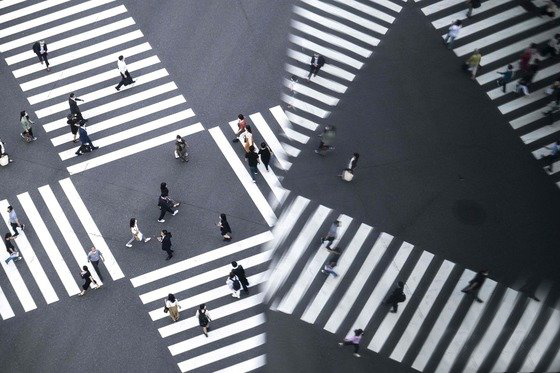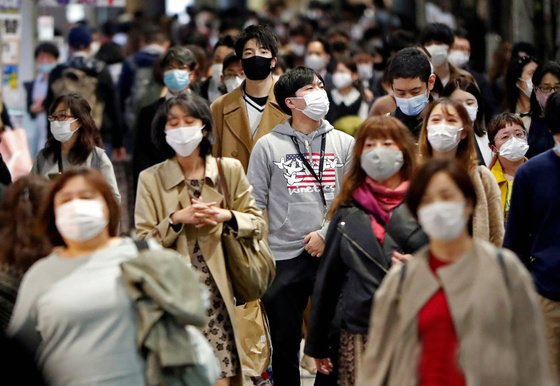 The Japanese government is considering lifting their state of emergency on the 1st of next month. Japan is exercising the largest quarantine measure for COVID-19, issued to 19 prefectures (metropolitan governments) including Tokyo. When the Tokyo Olympics were held in early August, the number of new COVID-19 confirmed cases, well over 20,000, had dropped sharply to the early 2,000 range, showing confidence in quarantine.
The Japanese government is considering lifting their state of emergency on the 1st of next month. Japan is exercising the largest quarantine measure for COVID-19, issued to 19 prefectures (metropolitan governments) including Tokyo. When the Tokyo Olympics were held in early August, the number of new COVID-19 confirmed cases, well over 20,000, had dropped sharply to the early 2,000 range, showing confidence in quarantine.
Katsunobu Kato, the Chief Cabinet Secretary of Japan stated at a regular press conference on the 27th, “The number of new confirmed patients and the number of people needing treatment are decreasing, and the use of beds or severe beds in all regions is below 50%, the indicator of Stage 4.”
He added, “We are analyzing and grasping the vaccination situation, the number of people in critical condition, and the bed utilization rate by focusing on the medical situation.” The Japanese government plans to make a final decision on how to lift the declaration of emergency in Tokyo and other provinces by the 30th of October after a meeting of related ministers and experts on the 28th.
According to the Asahi Shimbun, eight regions where key measures such as prevention of prevalence, which is a quarantine measure that is a step below the state of emergency, are also likely to be lifted altogether. It is also considering not taking effect on key measures in areas where the emergency is lifted.
The Japanese government has greatly eased quarantine measures because the number of daily COVID-19 confirmed cases has recently decreased and the vaccination rate has increased. According to the announcement of the Japanese Prime Minister’s Office, 55.8% of the Japanese population had completed their second dosage of vaccinations for COVID-19 as of the 23rd, and 67.8% of those who had received their first dosage of the vaccination.
The Japanese tourism industry, which was directly affected by COVID-19 on news of the emergency lifting, is showing expectations of recovery in the industry. According to the Mainichi Shimbun, Hankyu Transportation, a travel conglomerate in Osaka City, opened a tour application page exclusively for vaccinated people which will be available on the 15th. Products that travel to Kyoto and Nara for the maple season from the end of next month are gaining popularity.
Analysts say the Japanese auto industry will lose up to 1.2 trillion yen (about 13 trillion won) in economic losses caused by a shortage of parts such as semiconductors. The Asahi Shimbun reported on the 24th that used car prices are even rising as the scale of production cuts in the automobile industry, which supports the Japanese economy.
According to Asahi’s tally, the total amount of production cuts by major Japanese auto giants surged from about 930,000 as of the end of last month to 1.7 million this month. This is equivalent to about 7% of last year’s production.
Toyota, Japan’s largest automobile maker, reduced its production plan by 760,000 units between September and October due to a shortage of semiconductor parts and the spread of COVID-19 in Southeast Asia, where parts factories are located.
Toyota, which has even temporarily suspended production of all factories in Japan, lowered its global production target this year from 9.3 million to 9 million units.
Honda also plans to reduce the production of its plant in Japan to 40% and 70% from early October this year due to a lack of parts. As a result, Honda’s global market sales are expected to fall 150,000 units to only 4.85 million units this year from its original plan.
Suzuki expects production to be reduced by 350,000 units to 2.88 million units this year, and Subaru expects production to be lowered by 40,000 units to 990,000 units. The Asahi Shimbun said the spread of COVID-19 infections in Southeast Asia, including Vietnam, has disrupted the procurement of parts by carmakers, adding that confusion is expected to continue by the end of this year.
Citing an analysis by the think tank, Daiwa General Research Institute, the newspaper estimated that up to 1.2 trillion yen in economic losses would occur if the ripple effect was reflected based on the current production cut.
 In a keynote lecture at Softbank World 2021, which opened online on the 15th, Softbank Chairman Sohn Jung-eui stressed that the key to the revival of the Japanese economy lies in “smart robots (abbreviated as smabo).” It was argued that the introduction of 100 million smart robots will increase the labor force by 1 billion people. According to the Japanese robot media “Robot Start,” Chairman Sohn first announced in a keynote speech that Tesla is pursuing the development of “Teslabot” on the 19th of last month, saying, “I finally feel that a full-fledged humanoid robot world is coming,” but Softbank also began to give a lecture that day.Chairman Sohn suggested a smart robot as an alternative to restoring competitiveness, saying that the Japanese economy once drove the global economy, but now it is losing its competitiveness due to sluggish labor and productivity.He stressed that just as smartphones have had a significant impact on industries and economies around the world, they will change from “Karabo” to “Smabo” society in the future. Garabo refers to a robot without intelligence, and Smabo refers to a robot that adapts to work while artificial intelligence learns without a programming process. He stressed that in the future, we should aim for a “human-like smabo” rather than a “robot-like human.”Introducing examples of Boston Dynamics’ humanoid robot “Atlas” and logistics warehouse robot “Stretch,” Chairman Sohn said, “It’s cool to respond in a timely manner while learning on your own,” showing the difference between Karabo and Smabo.He predicted the advent of the robot era in 2024. Now, when artificial intelligence introduces smabo built into robots, it has the potential to improve 3 times (24 hours of work), 3.5 times productivity, and 10 times competitiveness. If Smabo is introduced in the 100 million range, it will have the effect of increasing the working population by 1 billion, he stressed.Softbank also introduced Germany-based Chinese company Agile Robot’s technology and Norway’s auto-warehouse picking system as another example, saying it is investing in 18 smabo-related companies through Vision Fund. He explained that customers who introduced Agile Robot’s technology and Auto Store’s automatic warehouse picking system technology are seeing effects such as increased productivity, reduced defect rates, and reduced labor costs.
In a keynote lecture at Softbank World 2021, which opened online on the 15th, Softbank Chairman Sohn Jung-eui stressed that the key to the revival of the Japanese economy lies in “smart robots (abbreviated as smabo).” It was argued that the introduction of 100 million smart robots will increase the labor force by 1 billion people. According to the Japanese robot media “Robot Start,” Chairman Sohn first announced in a keynote speech that Tesla is pursuing the development of “Teslabot” on the 19th of last month, saying, “I finally feel that a full-fledged humanoid robot world is coming,” but Softbank also began to give a lecture that day.Chairman Sohn suggested a smart robot as an alternative to restoring competitiveness, saying that the Japanese economy once drove the global economy, but now it is losing its competitiveness due to sluggish labor and productivity.He stressed that just as smartphones have had a significant impact on industries and economies around the world, they will change from “Karabo” to “Smabo” society in the future. Garabo refers to a robot without intelligence, and Smabo refers to a robot that adapts to work while artificial intelligence learns without a programming process. He stressed that in the future, we should aim for a “human-like smabo” rather than a “robot-like human.”Introducing examples of Boston Dynamics’ humanoid robot “Atlas” and logistics warehouse robot “Stretch,” Chairman Sohn said, “It’s cool to respond in a timely manner while learning on your own,” showing the difference between Karabo and Smabo.He predicted the advent of the robot era in 2024. Now, when artificial intelligence introduces smabo built into robots, it has the potential to improve 3 times (24 hours of work), 3.5 times productivity, and 10 times competitiveness. If Smabo is introduced in the 100 million range, it will have the effect of increasing the working population by 1 billion, he stressed.Softbank also introduced Germany-based Chinese company Agile Robot’s technology and Norway’s auto-warehouse picking system as another example, saying it is investing in 18 smabo-related companies through Vision Fund. He explained that customers who introduced Agile Robot’s technology and Auto Store’s automatic warehouse picking system technology are seeing effects such as increased productivity, reduced defect rates, and reduced labor costs.
The robot companies introduced by Chairman Sohn as a Smabo company are Agile Robot, Auto Store, Berkshire Gray, Neuro, Braincorp, Cruise, Aurora, Trax, OpenTrons, KINON, CMR, and XAG. He argued that while Karabo remains in limited areas such as production plants, Smabo will be applied not only to manufacturing but also to all industries such as medical and retail/service.
Sam Kim
Asia Journal

